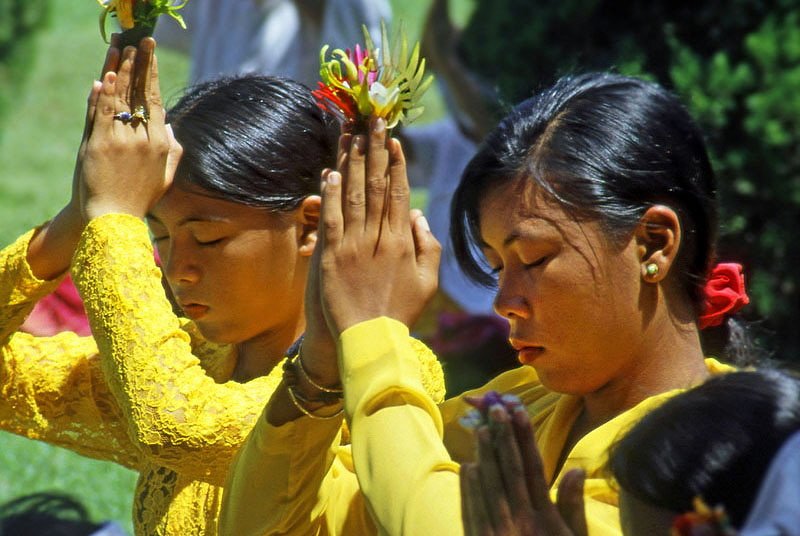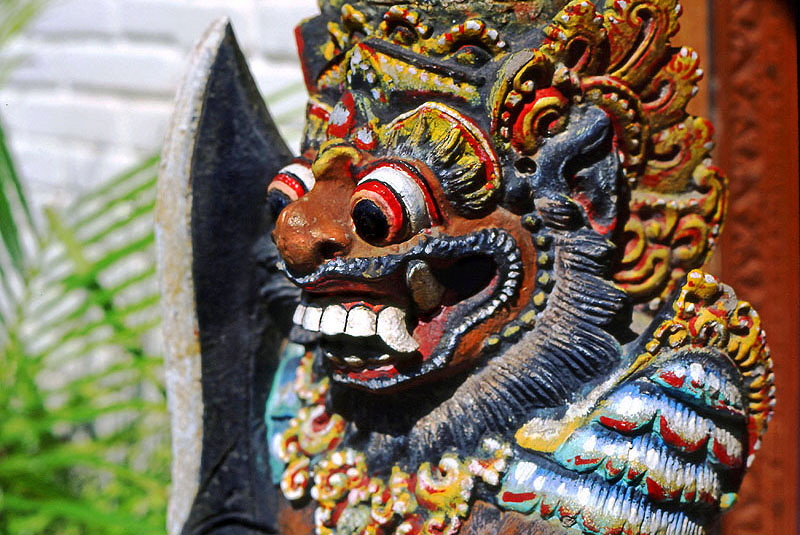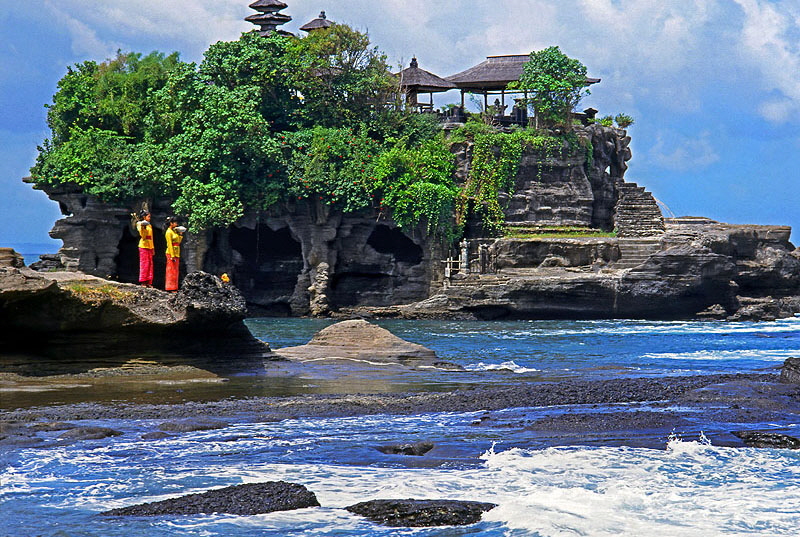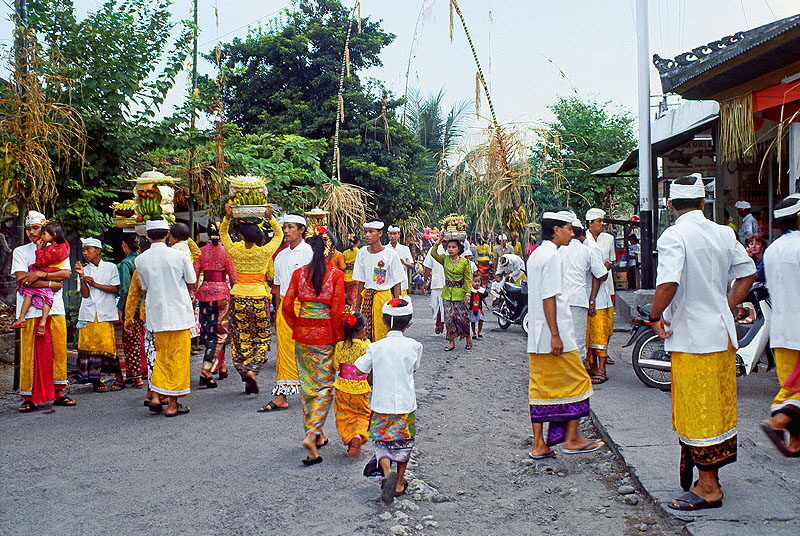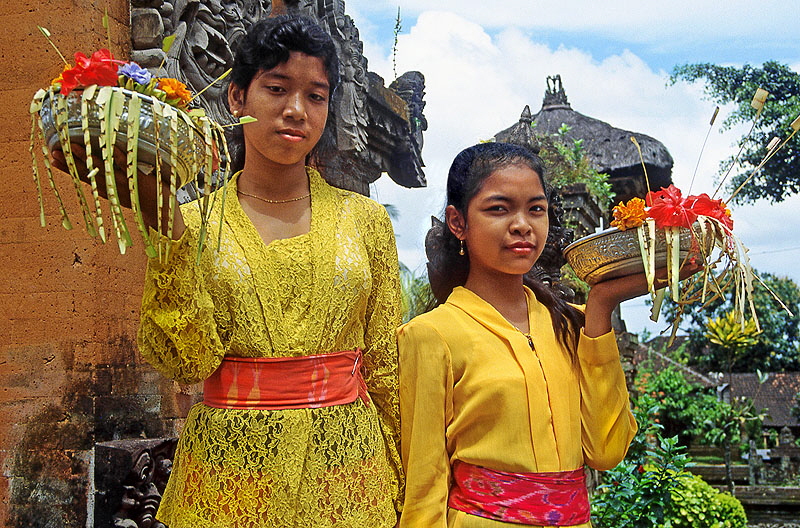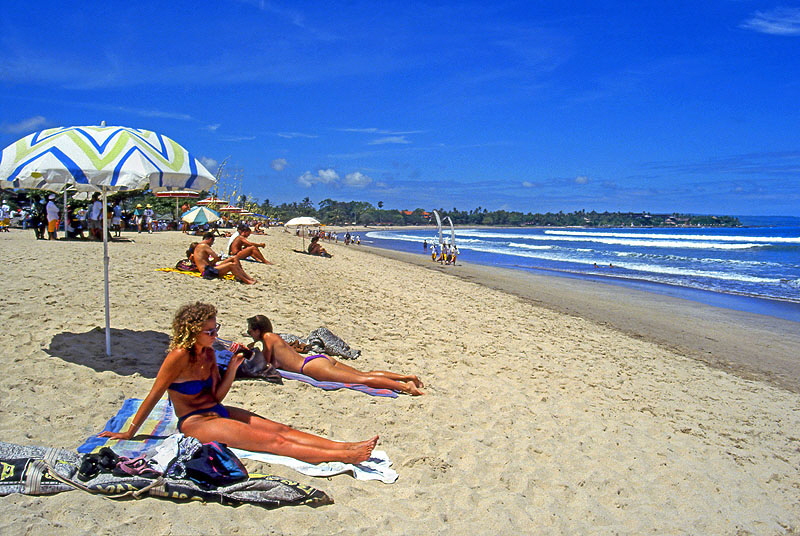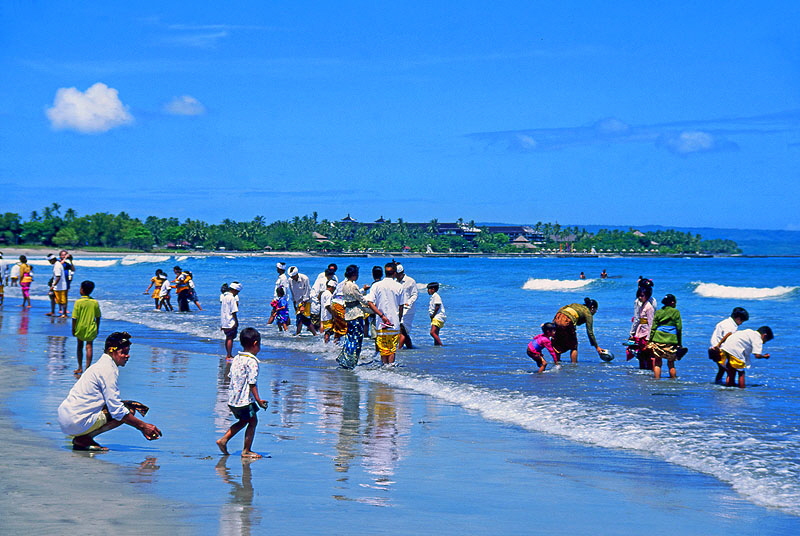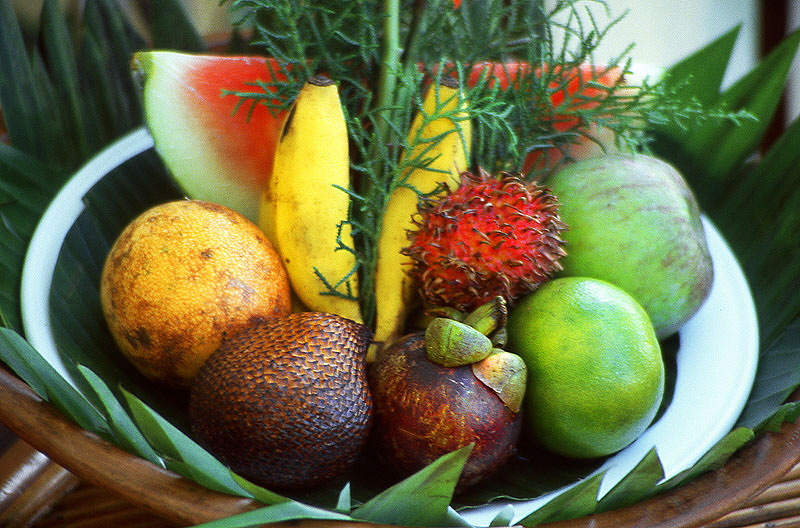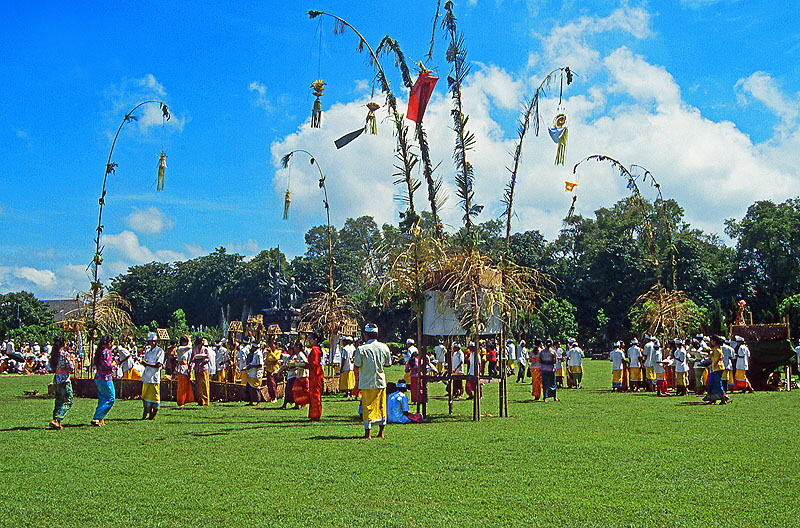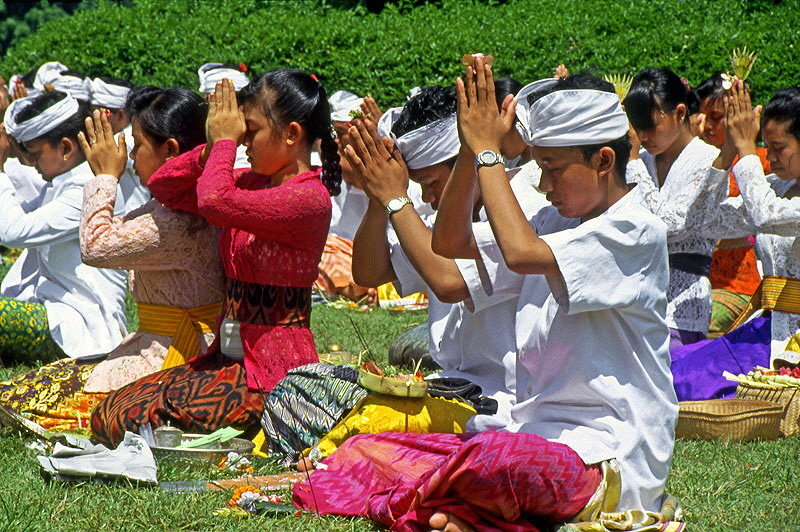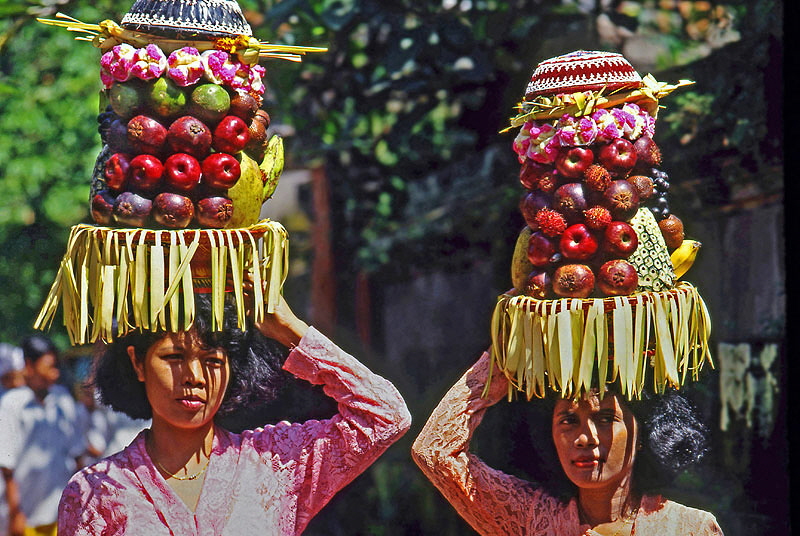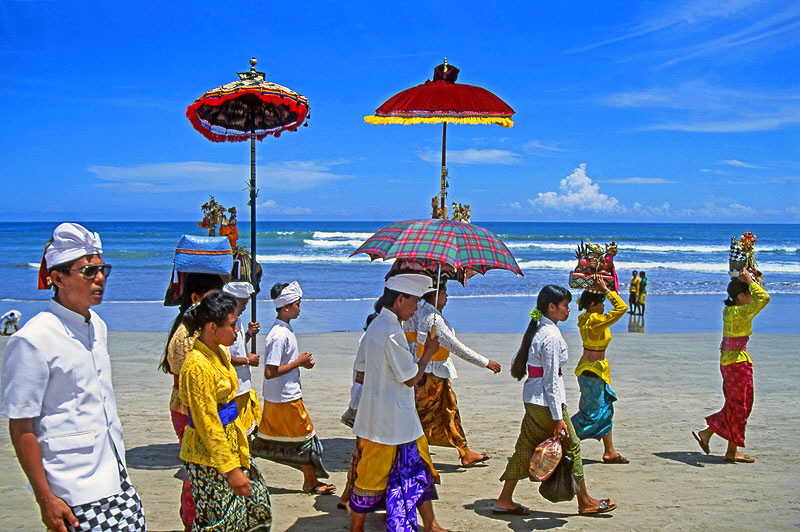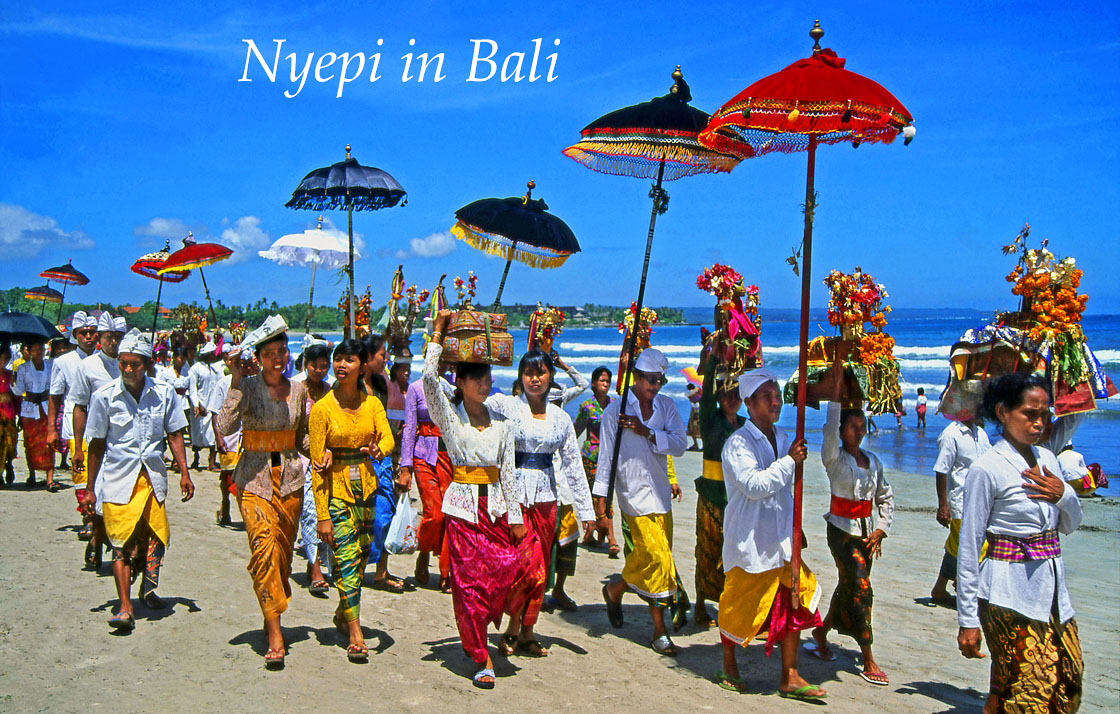
A New Year unlike anywhere else on earth
When deciding where to go on a tropical holiday, apart from the destination, one’s priority tends to be selecting the best time of the year - low rainfall, coolest months, fewer crowds, and so on.
For me, when visiting Bail, there is only one ‘best time’ - that’s during the unique six day long Nyepi (Balinese New Year) and the festivals of Melasti and Ogoh Ogoh that take place during this religious and holiday period.

Marking the end of the old year, and the beginning of a new one, Nyepi is the most sacred Hindu event in Bali and the rest of the Hindus in Indonesia. Some non-Hindus also observe it in respect for others. Balinese follow the ‘Saka’ lunar calendar that is 78 years behind the international Gregorian calendar. So in 2022, Bali is in the international year 1944.
Referred to as the ‘island of gods’, its culture and religion include many deities. In addition to the main three - Brahma, Shiva, and Vishnu, there are also many other popular gods. Statues of the god Bhoma, whose facial expression can be interpreted as friendly or angry, guard almost all temple (pura) entrances. The famous giant Garuda eagle is also stylised as the national airline logo.
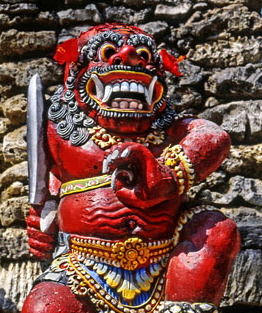
Bhoma guardian statue
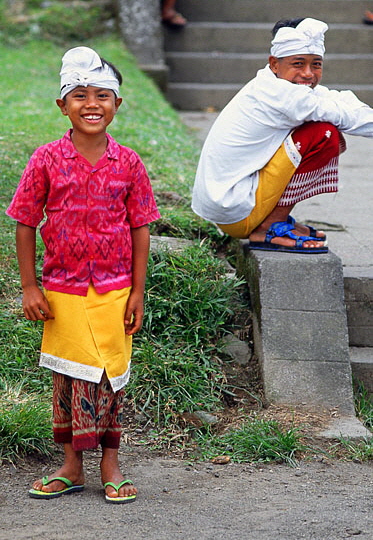

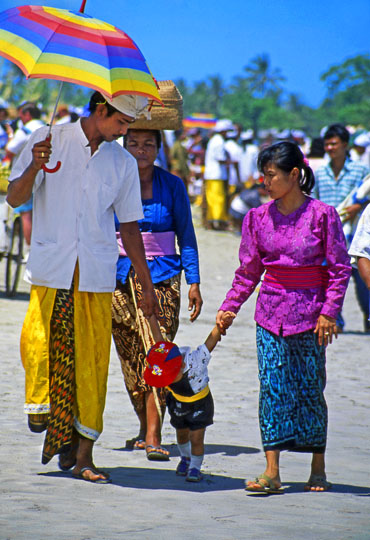
New Year in the West might mean a party with family and friends, fireworks, even a hangover, and overeating.
In Bali, Nyepi - meaning ‘The Day of Silence’ is exactly what it is. The day of total abstinence and silence happens on the third day of the festivities when everything is closed for 24 hours from 6 am. No traffic, no flights, hotels dim down the lights with minimum service, and beaches are empty. For the Balinese, all activities come to a halt. It is an occasion to reflect, meditate, fast, stay indoors and quietly be close with their families. Only essentials like hospitals, police and emergency services operate.
However, the two days before the day of silence and three days after, the island is a feast of sparkling colour and celebrations. It is a time also for purification ceremonies, making temple offerings, offerings to the sea, praying for prosperity, and banishing ‘bad spirits’. It is the event that brings all people together, where friends and family forgive each other for wrong things said and done, and receive blessings from temple elders.
Bad spirit effigy
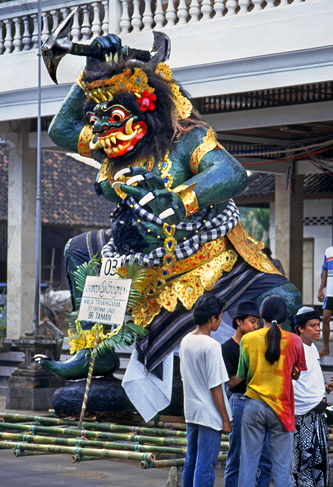

A procession heading for the beach
I was located at Sanur Beach on the east coast, but one of the biggest parades of the Melasti Festival was at Kuta Beach in the west, just 20 minutes by car. I was advised to go early, but even at six in the morning, driving along the main roads, it was already gathering crowds. Hundreds were already walking along in small groups, stepping aside to give way to those in vehicles heading for the beach.
Wherever they live on the island, the Balinese must head for a beach at some time, to perform the Melasti purification ceremony. While most come walking, others arrive by motorbike, or groups packed into trucks.
It was a glorious morning, blue sky, calm sea and tourists on Kuta beach were already basking (or baking) in the tropical sun. This is a wide beach, so they were some distance away from the locals gathering closer to the sea.
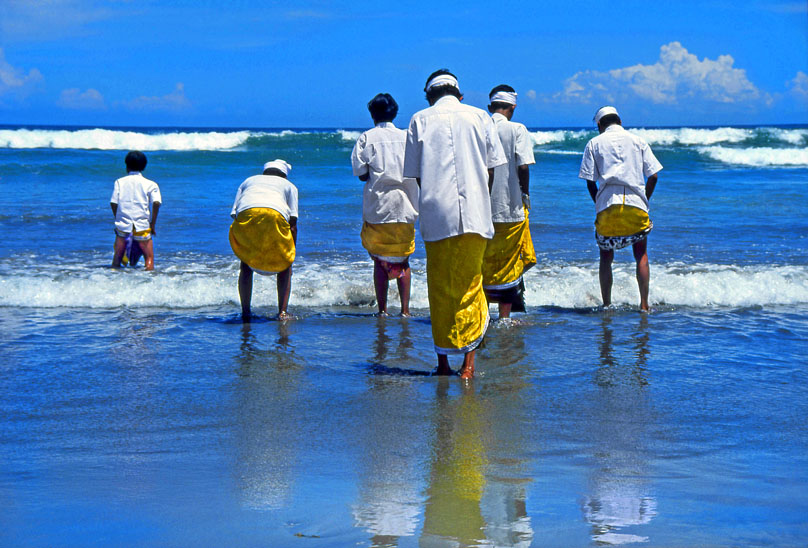
Purification ritual
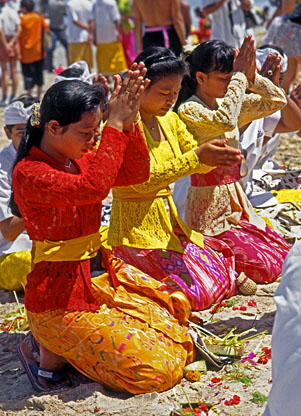
Traditional Kebaya style attire
Those at the coast had come specifically to perform the purification rite. By the pouring of water (source of life) and offerings made to the ocean, the Balinese believe in washing away impurities.
Days before the festival, households prepare small floral offerings. Pretty little baskets woven from tender coconut leaves are filled with flowers and an incense stick, as floating gifts to the sea. Some also bring objects from their temples, and by dipping it in the sea, perform a cleansing ritual. Many daises are built along the coast to place religious articles, figurines, effigies, and various colourful objects to be offered to the sea. Priests gather around and insistently chant to the worshippers, who later receive blessings, including the sprinkling of water over the devotee’s head.
Dressed to look their best, women adorn themselves in colourful Kebaya style attire, a wide sash tied around their waist, and flowers (usually Frangipani) in their hair. Men wear white short-sleeved shirts and deep yellow or multi coloured batik sarongs (wraparounds), and cloth headpieces (Udeng). These styles of garments are very much a part of the island’s tradition and culture, both during Nyepi and other festivals.
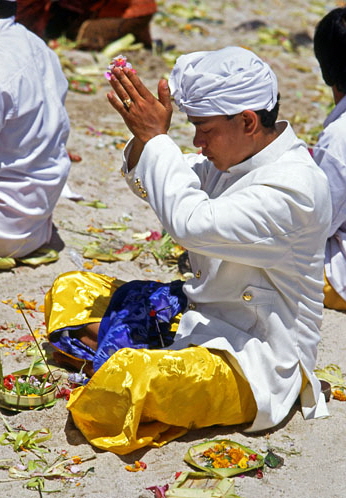
Typical menswear, with Udeng headpiece
Melasti Festival parade
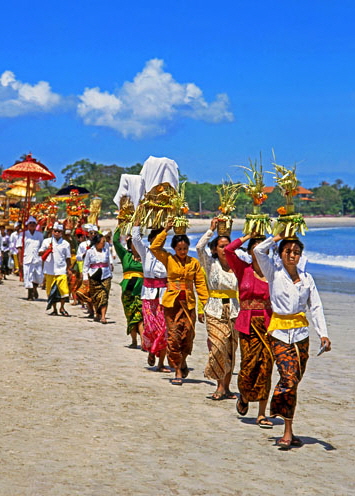

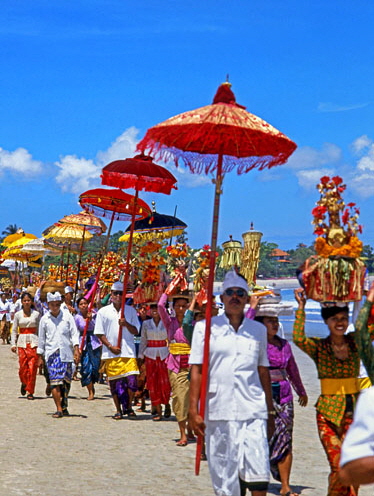
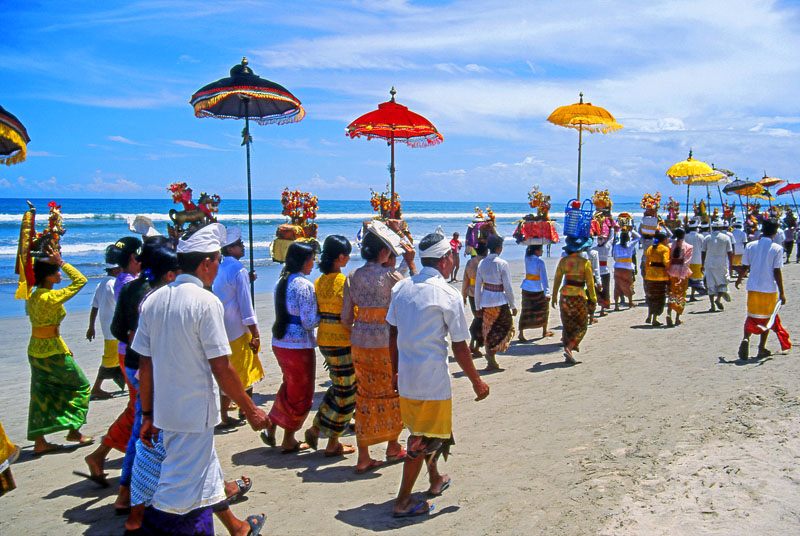
Watching in anticipation, in the far distant, I could see the faint image of a long procession approaching along the beach. As it gets closer, the sound of drums and cymbals gets louder. Everyone is excited, as the exuberant paraders dressed in a multitude of colour, some bearing huge vivid parasols and tall prayer banners (Umbul-umbul) go past us, heading away as far as the eye could see. Cameras and phones click non-stop as both locals and tourists capture the moment.
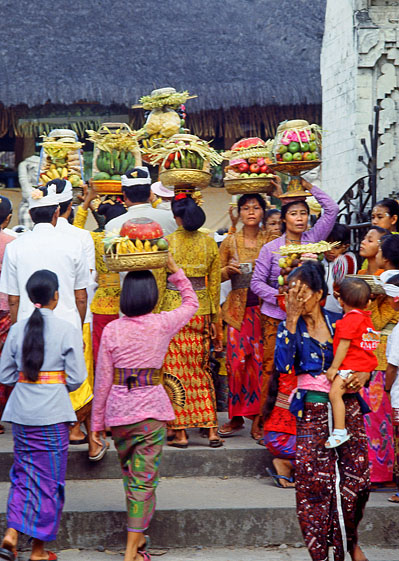
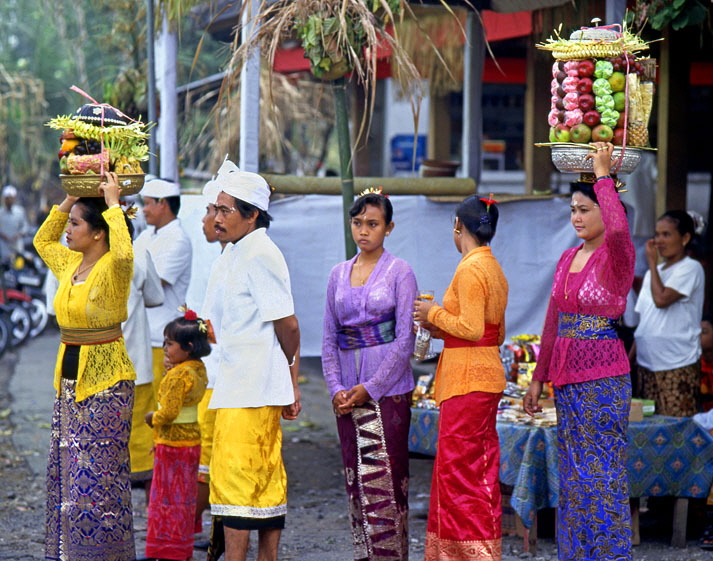
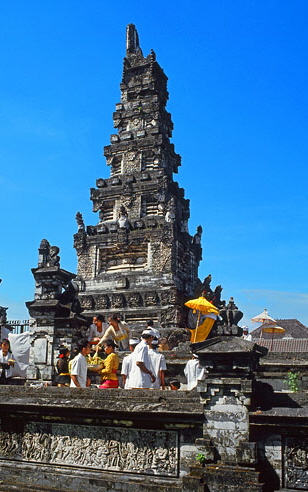
Devotees at a temple site
As much as the Melasti parade along the beach is wonderful to watch, village folk at their temples are just as active. Worshippers carry neatly stacked fruit and flower offerings masterfully balancing them on their heads, as they follow each other to temple sites. The midday heat and humidity do not seem to affect anyone, except us visitors not used to it. It is a rewarding experience to observe the togetherness and cheerful atmosphere among the people. Tourists should be aware to dress appropriately especially at places of worship.
Arriving at the capital Denpasar, I headed to a large green space that was allocated to hundreds of pilgrims that had arrived from different parts of the island. They had gathered to listen to speeches and mantras from the priest and to pray with them.
I followed a group of worshippers to a nearby temple. The entrance steps had two guardian stone Bhoma statues on either side which is common in most temples.. The statues were covered with kain polens cloth (black and white chequered cloth that symbolise good and evil) and decorated with red Hibiscus flowers. Inside, in the compound, devotees were seated on the ground with clasped hands raised in a praying stance while the priest chanted. It was a wonderful sight to observe and one could not help but feel respect and awe at people’s devotion to their faith. After the service, many flocked to get some refreshments, and I was grateful for a long cool drink of coconut water.
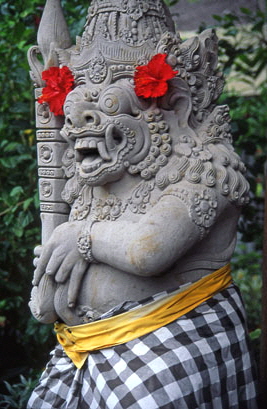
Bhoma statue at a temple

The day before Nyepi, the evening celebrations come in the form of the Ogoh Ogoh parade. Floats with large effigies of ‘monsters’ representing evil spirits that have polluted nature and life, pass through the streets. Each village would design and make its own version of the demon Ogoh Ogoh. The large ‘sculptures’, some of which can be about 30 feet tall, are made from bamboo frameworks and covered with layers of Papier-mâché and cloth and painted. The floats are followed from behind by loud Gamelan - traditional music consisting of drums, gongs, cymbals, flutes and xylophones.
As the new year approaches, priests chant steadfastly to exorcise the malevolent spirits of the old year away. Some burn the effigy as the new day dawns. With the new year ushered in, the evil spirits have been expelled and the islanders are cleansed in preparation for a new beginning. Some effigies are kept by museums, and others purchased by collectors as works of art.
Ogoh Ogoh effigies
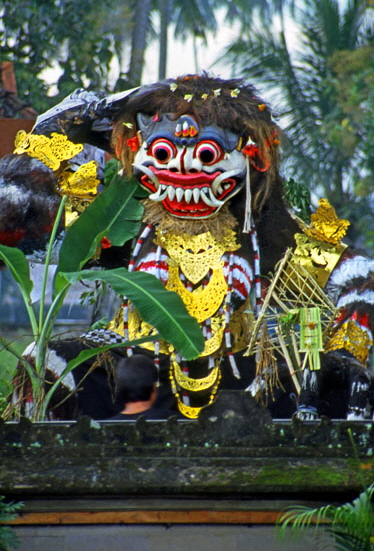
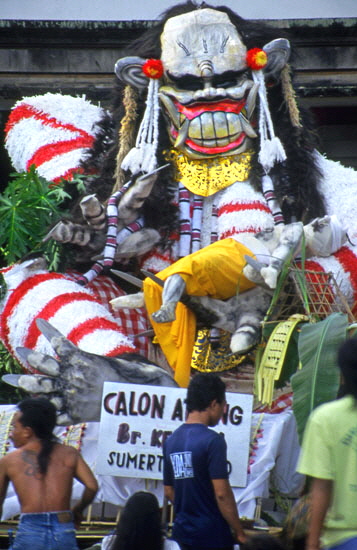
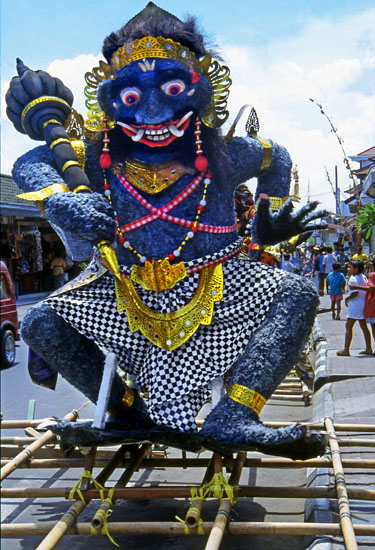
Away from the crowded celebrations and events, quieter rural areas in their small way observe the rituals and are just as devoted to their faith. A Balinese friend of mine invited me to accompany him on a bike ride to the countryside, and his nearby village temple.
During the festivities, something extraordinary happens to the countryside scenery too. Bali has one of the most verdant landscapes, with bright green paddy fields, and terraced farmed land. Scattered throughout these rural areas are little villages. And the women dressed in bright warm colours, carrying their offerings, visually contrast against the greenery as they walk through the green fields to their temple. With the bike parked by the roadside, we stepped over a ditch and followed the narrow path between the rice fields. Watching small groups of pilgrims walk through the paddy field paths was a stunning photo opportunity and is a most picturesque sight one could ever see. We even spotted a Barong dancer (mythological creature) posing still for us.
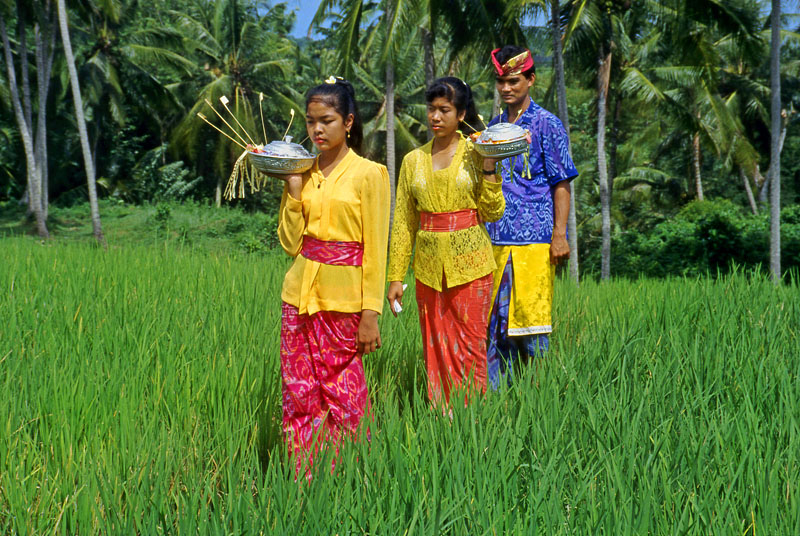
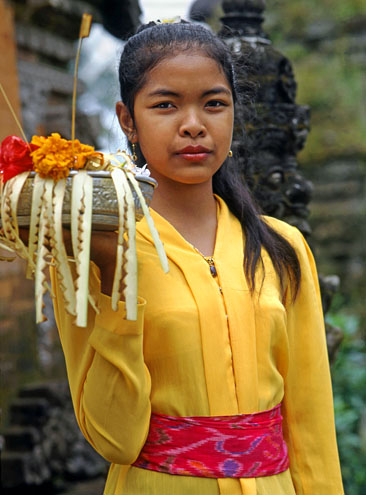
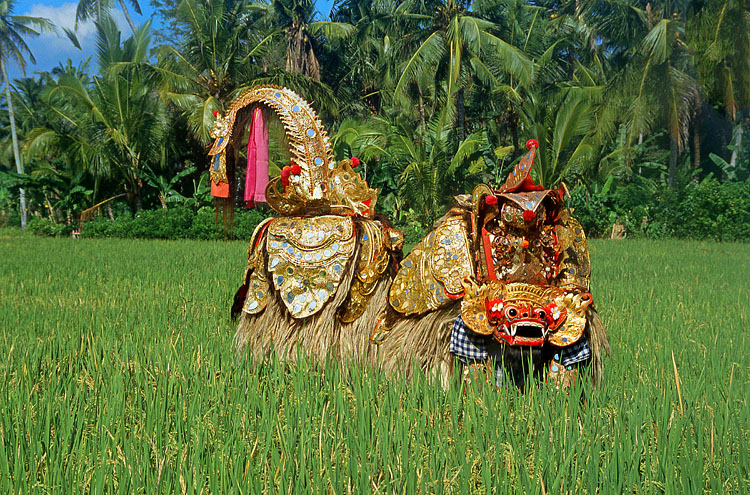
Barong dancer in paddy field
I was staying at the Grand Mirage Resort in Nusa Dua. When I arrived, the place was busy with holidaymakers and hotel staff chatting in anticipation of the festivities to come. And the couple of days before the new year, I had indulged and enjoyed the celebrations and parades during the Melasti festival. Come the morning of Nyepi, looking outside my balcony at first it felt eerily quiet, except for the sound of birds fluttering about in the hotel gardens and the gentle sound of waves breaking along the empty beach. Yet there was an atmosphere of peace and tranquillity and I felt privileged to be in the presence during this spiritual time. Happily confined to my room, it felt like a time of reflection for me too.
I spent three wonderful weeks in Bali, and timing it during the New Year couldn’t have been better.
16 images here ©JAYTRAVELPHOTOS
© COPYRIGHT notice. The images on this site are for viewing only.
To purchase any, for personal or commercial use, please contact us at jaytravelphotos@aol.com
